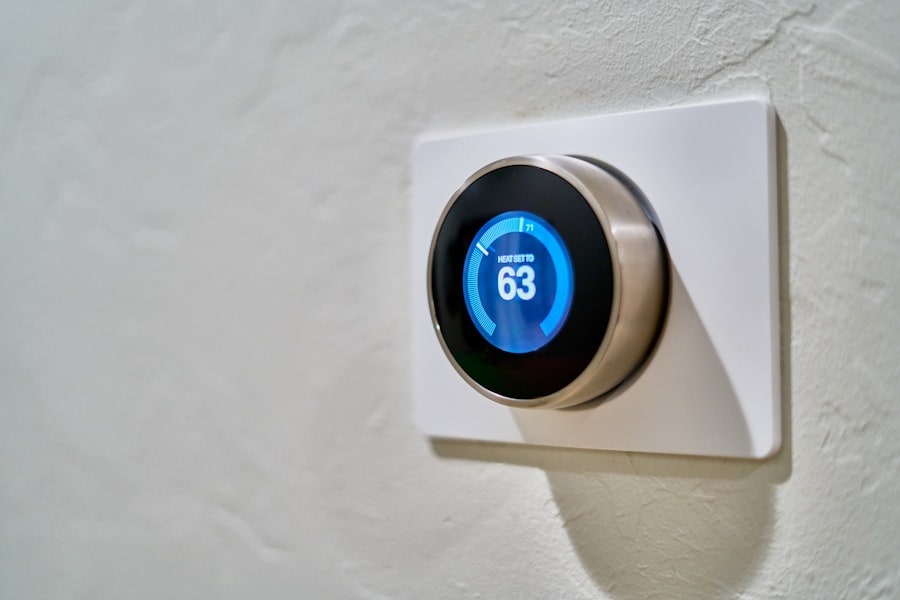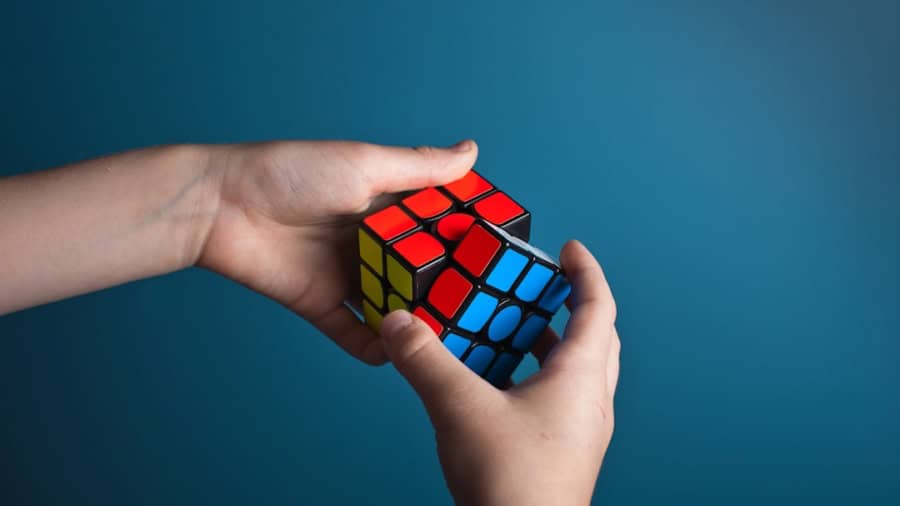The advent of autonomous home cleaning robots marks a significant milestone in the evolution of household technology. These devices, often referred to as robotic vacuums or floor cleaners, have transformed the way we approach domestic chores. By leveraging advanced sensors, navigation systems, and artificial intelligence, these robots can autonomously navigate through homes, identifying and cleaning various surfaces without human intervention.
The convenience they offer is unparalleled; users can schedule cleaning sessions remotely, allowing them to focus on other tasks or simply enjoy their leisure time. The rise of autonomous home cleaning robots is not merely a trend but a reflection of broader societal shifts towards automation and smart living. As urbanization increases and lifestyles become busier, the demand for efficient home management solutions has surged.
These robots are designed to alleviate the burden of routine cleaning tasks, providing a level of convenience that aligns with modern living. With features such as obstacle detection, mapping capabilities, and even integration with smart home systems, these devices are becoming indispensable tools in many households.
Key Takeaways
- Autonomous home cleaning robots are revolutionizing the way households maintain cleanliness and convenience.
- Integration of autonomous home cleaning robots in IoT ecosystems allows for seamless control and monitoring through connected devices.
- Advancements in AI and machine learning enable autonomous home cleaning robots to adapt to different environments and improve cleaning efficiency.
- Challenges and limitations such as navigation in complex spaces and handling of obstacles need to be addressed for optimal performance in IoT ecosystems.
- The impact of autonomous home cleaning robots on household efficiency and convenience is significant, saving time and effort for homeowners.
Integration of Autonomous Home Cleaning Robots in IoT Ecosystems
The integration of autonomous home cleaning robots into the Internet of Things (IoT) ecosystem represents a significant leap forward in smart home technology. IoT refers to the interconnected network of devices that communicate and share data with one another, creating a seamless user experience. When cleaning robots are integrated into this ecosystem, they can interact with other smart devices, such as thermostats, security cameras, and lighting systems.
This interconnectedness allows for enhanced functionality and user control. For instance, a user can program their robotic vacuum to start cleaning when they leave the house, which can be detected through their smartphone’s location services. Additionally, these robots can communicate with smart home hubs to receive commands or updates.
If a user has a smart speaker, they can simply issue voice commands to initiate cleaning sessions or adjust settings. This level of integration not only simplifies the cleaning process but also enhances the overall efficiency of household management.
Advancements in AI and Machine Learning for Autonomous Home Cleaning Robots

Recent advancements in artificial intelligence (AI) and machine learning have significantly improved the capabilities of autonomous home cleaning robots. These technologies enable robots to learn from their environment and adapt their cleaning strategies accordingly. For example, many modern robotic vacuums are equipped with sophisticated algorithms that allow them to map out a room’s layout, identify high-traffic areas that require more frequent cleaning, and even recognize different types of flooring materials.
Machine learning algorithms enable these robots to improve their performance over time. As they encounter various obstacles and challenges within a home, they can analyze their experiences and refine their navigation techniques. This adaptability is crucial for ensuring thorough cleaning in complex environments filled with furniture and other obstructions.
Furthermore, AI-driven features such as object recognition allow these robots to avoid delicate items or navigate around pets, enhancing their usability in diverse households.
Challenges and Limitations of Autonomous Home Cleaning Robots in IoT Ecosystems
Despite the impressive advancements in technology, autonomous home cleaning robots face several challenges and limitations within IoT ecosystems. One significant issue is the variability in home environments. Not all homes are designed with robotic cleaning in mind; some may have intricate layouts, numerous obstacles, or uneven surfaces that can hinder a robot’s effectiveness.
While many models are equipped with advanced navigation systems, they may still struggle in particularly cluttered or complex spaces. Another challenge lies in the integration process itself.
This fragmentation can lead to a less cohesive smart home experience and may deter some users from fully embracing these technologies.
Impact of Autonomous Home Cleaning Robots on Household Efficiency and Convenience
The impact of autonomous home cleaning robots on household efficiency is profound. By automating routine cleaning tasks, these devices free up valuable time for homeowners, allowing them to focus on more meaningful activities or simply relax. The ability to schedule cleanings remotely means that users can return to a clean home without having to invest time and effort into the task themselves.
This convenience is particularly appealing for busy families or professionals who juggle multiple responsibilities. Moreover, the efficiency of these robots extends beyond mere time savings. Many models are designed to optimize their cleaning paths and techniques based on real-time data collected during their operations.
This means that they can cover more ground in less time compared to traditional vacuuming methods. Additionally, some advanced models feature self-emptying capabilities, which further reduce the need for user intervention and maintenance. As a result, households can maintain higher cleanliness standards with minimal effort.
Future Trends and Innovations in Autonomous Home Cleaning Robots

Advancements in AI and Machine Learning
Looking ahead, several trends and innovations are poised to shape the future of autonomous home cleaning robots. One notable direction is the continued integration of AI and machine learning technologies. As these algorithms become more sophisticated, we can expect robots to exhibit even greater levels of autonomy and adaptability.
Personalized Cleaning and Multi-Functionality
Future models may be able to learn user preferences over time, adjusting their cleaning schedules based on individual habits or seasonal changes. Another exciting trend is the potential for enhanced multi-functionality. While many current models focus primarily on vacuuming or mopping floors, future innovations may see robots equipped with additional capabilities such as window cleaning or surface sanitization.
Improved Sensors and Healthier Living Environments
The incorporation of advanced sensors could enable these devices to detect allergens or pollutants in the air, prompting them to take action when necessary. Such advancements would not only improve cleanliness but also contribute to healthier living environments.
Ethical and Privacy Considerations in the Use of Autonomous Home Cleaning Robots
As with any technology that collects data and operates within personal spaces, ethical and privacy considerations are paramount when it comes to autonomous home cleaning robots. These devices often rely on sensors and cameras to navigate homes effectively, raising concerns about data security and surveillance. Users must be aware of how their data is collected, stored, and utilized by manufacturers, as well as the potential risks associated with unauthorized access.
Moreover, there is an ethical dimension related to the implications of automation on employment within the cleaning industry. As more households adopt robotic cleaners, there may be concerns about job displacement for professional cleaners. While these robots can enhance convenience for homeowners, it is essential to consider how this shift impacts labor markets and whether there are ways to balance technological advancement with social responsibility.
The Potential of Autonomous Home Cleaning Robots in Shaping the Future of IoT Ecosystems
The potential of autonomous home cleaning robots in shaping the future of IoT ecosystems is immense. As technology continues to evolve, these devices will likely become even more integrated into our daily lives, offering unprecedented levels of convenience and efficiency. The ongoing advancements in AI and machine learning will enhance their capabilities, allowing them to adapt to diverse environments while providing tailored cleaning solutions.
However, it is crucial to address the challenges and ethical considerations associated with this technology as it becomes more prevalent in households worldwide. By fostering a responsible approach to innovation that prioritizes user privacy and social implications, we can ensure that autonomous home cleaning robots contribute positively to our lives while enhancing the overall smart home experience. The journey towards fully automated homes is just beginning, and these robots will undoubtedly play a pivotal role in this transformation.
In a recent article on enicomp.com, the possibilities of the Galaxy Book2 Pro 360 are explored, showcasing how this device can enhance productivity and creativity in the digital age. This article complements the discussion on the future of autonomous home cleaning robots in IoT ecosystems by highlighting the importance of innovative technology in our daily lives. To read more about the Galaxy Book2 Pro 360, click here.
FAQs
What are autonomous home cleaning robots?
Autonomous home cleaning robots are robotic devices designed to clean floors, carpets, and other surfaces without human intervention. These robots use sensors, cameras, and artificial intelligence to navigate and clean a home.
How do autonomous home cleaning robots fit into IoT ecosystems?
Autonomous home cleaning robots can be integrated into IoT ecosystems through connectivity with smart home devices and platforms. This allows users to control and schedule the robots, receive status updates, and integrate them with other smart home functions.
What are the benefits of using autonomous home cleaning robots in IoT ecosystems?
Using autonomous home cleaning robots in IoT ecosystems can provide convenience, time savings, and improved cleaning efficiency. These robots can also contribute to a more connected and automated smart home environment.
What are the challenges of integrating autonomous home cleaning robots into IoT ecosystems?
Challenges of integrating autonomous home cleaning robots into IoT ecosystems include interoperability with different smart home platforms, security and privacy concerns, and the need for seamless connectivity and communication between devices.
What is the future outlook for autonomous home cleaning robots in IoT ecosystems?
The future of autonomous home cleaning robots in IoT ecosystems is expected to involve advancements in AI and machine learning, improved connectivity and interoperability with smart home devices, and the development of more sophisticated cleaning capabilities. These robots are likely to become an integral part of the smart home ecosystem.

